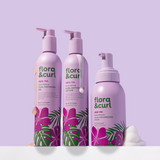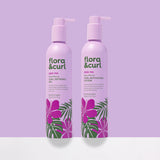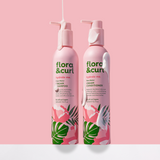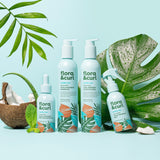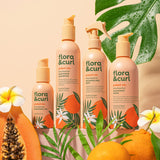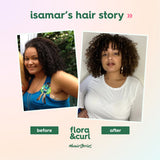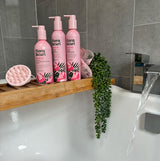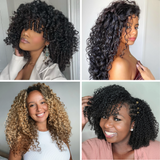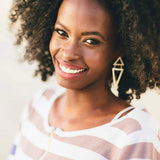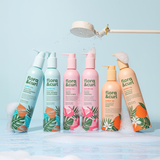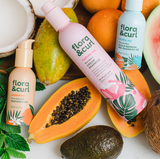

"How I grew to believe Black hair has power, genius and magic in it, defying gravity and limitation. I mean, look at how marvellous it is: Black hair grows up and out." - Angela Davis
We grew up with Kate Moss on the cover of Vogue; the leading actress in your favourite film was more often than not a white woman with straight golden locks, and when you scoped the stores for a new pair of jeans, the model showed off her slim figure while you stood there with a (beautiful) curvaceous build, (right?).

Clueless (1995), film poster, source: mSwali.com
Black beauty was rarely exhausted in the media. Inclusivity of race was a whole issue of its own. But, a powerful and international movement took the world by storm and paved the way for the black community to embrace their beauty. The Natural Hair movement embarked on its journey in the 1960s. It was also coined the "Black Is Beautiful" movement due to its many stances. This political journey was not only about natural hair. It was about embracing every fibre of their being. Their skin tone, facial features, heritage, culture and of course, their gravity-defying coils.
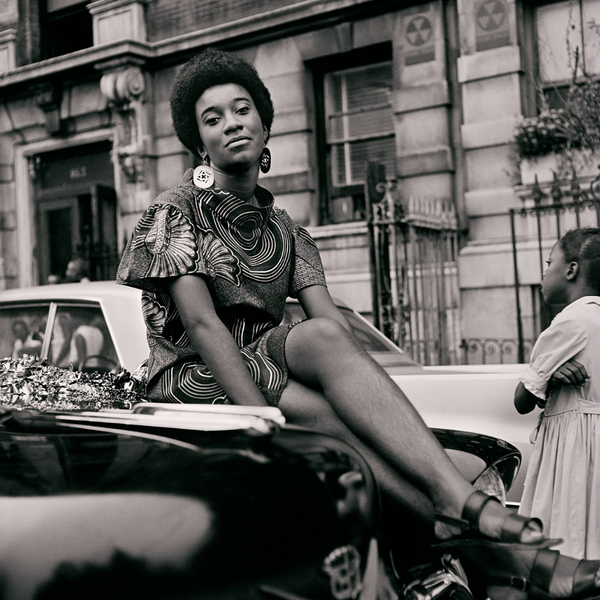
Photo by Kwame Brathwaite, source: The New York Times Style Magazine
It was an influential time that enabled the black community to reflect and explore who they were. This movement aimed to recognise white-washing and to challenge the Westernised standards of beauty. The first step to returning natural was to ditch the straighteners and the creamy crack. Although this may have seemed like a small step, the Black community strode into becoming unapologetically them. Embracing their hair that had been deemed undesirable for so long was a vital step.
Naturally '62: On the road to empowerment

Kwame Brathwaite self-portrait, circa 1964, taken in Harlem. Source: The New York Times Style Magazine
In 1962, black creatives hosted a fashion show in a nightclub in New York City called Purple Manor. The effects this had on the Black community was powerful. It proceeded to go viral and empower black men, women and children to embrace their roots.'The show, titled Naturally ’62, was organised by the African Jazz-Art Society & Studios (AJASS), a group of creatives, including photographer Kwame Brathwaite – now aged 82 – and his brother Elombe Brath (who died in 2014).' [P. Adesina, 2020. BBC online].
The show saw Black models paint the runway in culturally enriched clothing inspired by designs from Nairobi, afros defied gravity while curves of natural bodies caressed the scene. Their melanin was glowing under the stage lights with different skin tones that tackled colourism. The show was a success and an embodiment of what was yet to come in future generations.
Kwame Brathwaite (photographer of the show), told Tanisha Ford: "There was lots of controversies because we was protesting how, in Ebony magazine, you couldn't find an ebony girl." [P. Adesina, 2020. BBC online].
Gatekeepers of mainstream media held an opposing opinion toward the black community. The lack of representation was a problem, which inevitably exemplified the undesirability. Whenever a black actor was seen in the media they would either play as a sidekick of the main character, could be seen following the westernised beauty standards (straight-hair, lighter skin tone), or they would play a mere 5-minute piece as an extra (if that). Whatever the option, tokenism rang quite clearly.
The activists behind the Black Is Beautiful movement

Photography of Angela Davis. Source: Getty Images/Biography.com
Black activists and supporters of the Black Panther Party such as Angela Davis, Bobby Seale and Elaine Brown contributed to making the black community feel proud, safe and united by vivaciously flaunting their fabulous (and political-stating) fros with pride. Thus, this saw a large proportion of the black community step away from Westernised beauty standards. While the 60s was just the start of the Black Is Beautiful/Natural Hair Movement, it inspired generations to come.
Convergence: The Power of Social Media

Social media has allowed many people to share their thought-provoking opinions which have helped create the online global communities we see today. The natural hair journey is one, where people of all ethnicities, ages and genders can join and discuss the love for their hair — their hardships on the route to returning natural. These online communities have helped flourish movements, the ongoing Black is Beautiful movement being a perfect example of this too.
On a final note
Here at Flora & Curl, our CEO Rose Ovensehi had the vision to inspire and nurture the black community to encourage them to embrace their natural beauty. From educational content to help individuals understand their coils, creating truly natural recipes that nourish curls to the core — to raising awareness on the issues of representation in the media, our brand has always seemed to delve into topics to create an authentic unity with our online and offline communities (aka #floracurlfamily).
In 2020 we supported the LDF who work to dismantle systemic racism and discrimination. The NAACP Legal Defense and Educational Fund, Inc. is a legal organization fighting for racial justice. Through litigation, advocacy, and public education, LDF seeks structural changes to expand democracy, eliminate disparities, and achieve racial justice in a society that fulfils the promise of equality for all Americans. You can learn more about our charitable efforts on our Giving Back page.
To conclude, we have come such a long way in terms of Black representation in the media. And it's all thanks to the pioneers of this movement and the many supporters that forced Black voices to be heard. British Vogue no longer falls suit to portraying westernised beauty. They show the real, natural beauty of all ethnicities, genders, ages and disabilities (to name a few) — when we go to the shops to find a new pair of jeans, we see more representation than ever and finally, we can proudly say that our leading actress has shifted from the previous years' norm as we see Gabrielle Union, Viola Davis and Taraji P. Henson aglow on the cinema screens.
We must ineffably thank the Black excellence behind the movement for shaping the future and paving the ways for the black community to be seen, heard and cherished by all.
Naturally Yours,
The Team at Flora & Curl
Continue Reading
-
Nov 12th 2025This National Healthy Skin Month, we are highlighting the importance of scalp care and the foundation for healthy curls.
-
Oct 31st 2025
Moisture for Your Curls: How to Keep Your Hair Hydrated & Moisturised
Thirsty curls? Let’s fix that. Here’s your guide to keeping every strand hydrated, healthy, and happy. -
Oct 24th 2025
Protein for Your Curls: Why Protein Matters
Discover why protein matters, and how it strengthens weak curls, exploring Flora & Curl’s Strengthen Me range to repair, protect, and restore y... -
Oct 22nd 2025
Protein vs Moisture: How to Find the Right Balance for Healthy Curls
What is the difference between protein and moisture within your hair care routine? Learn how to tell what your curls need to stay strong, soft, and... -
Sep 25th 2025
Strengthen Me: The Era of Stronger Curls Has Arrived
After three years in the making, it’s finally here! We are proud to announce the launch of our most anticipated collection yet: the Strengthen Me r... -
Apr 13th 2025
How To Enjoy Time At Home During Social Distancing
We understand that periods of uncertainty and information overload can make many people feel uneasy and out of a routine. We’ve rounded up a few wa...

